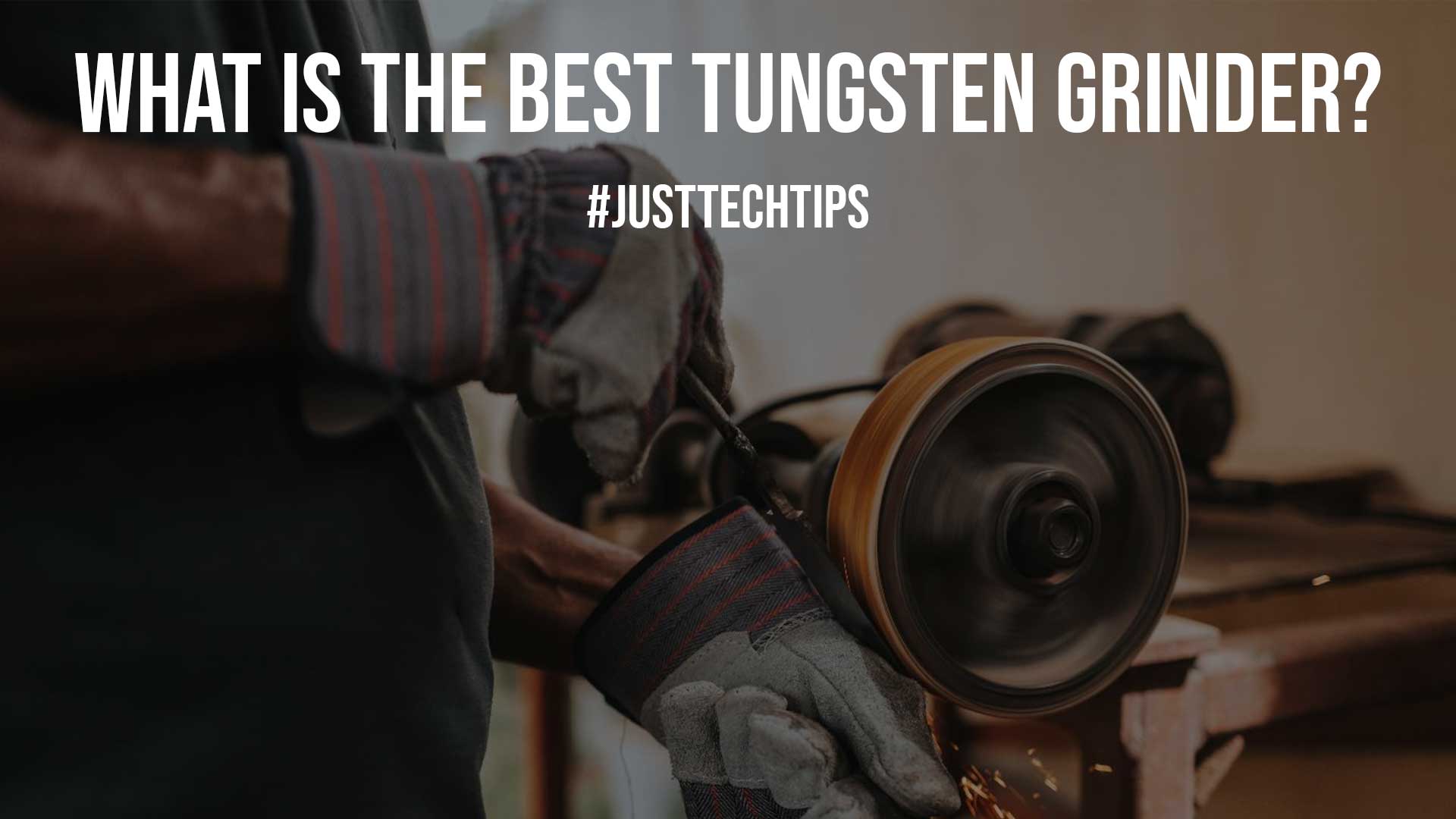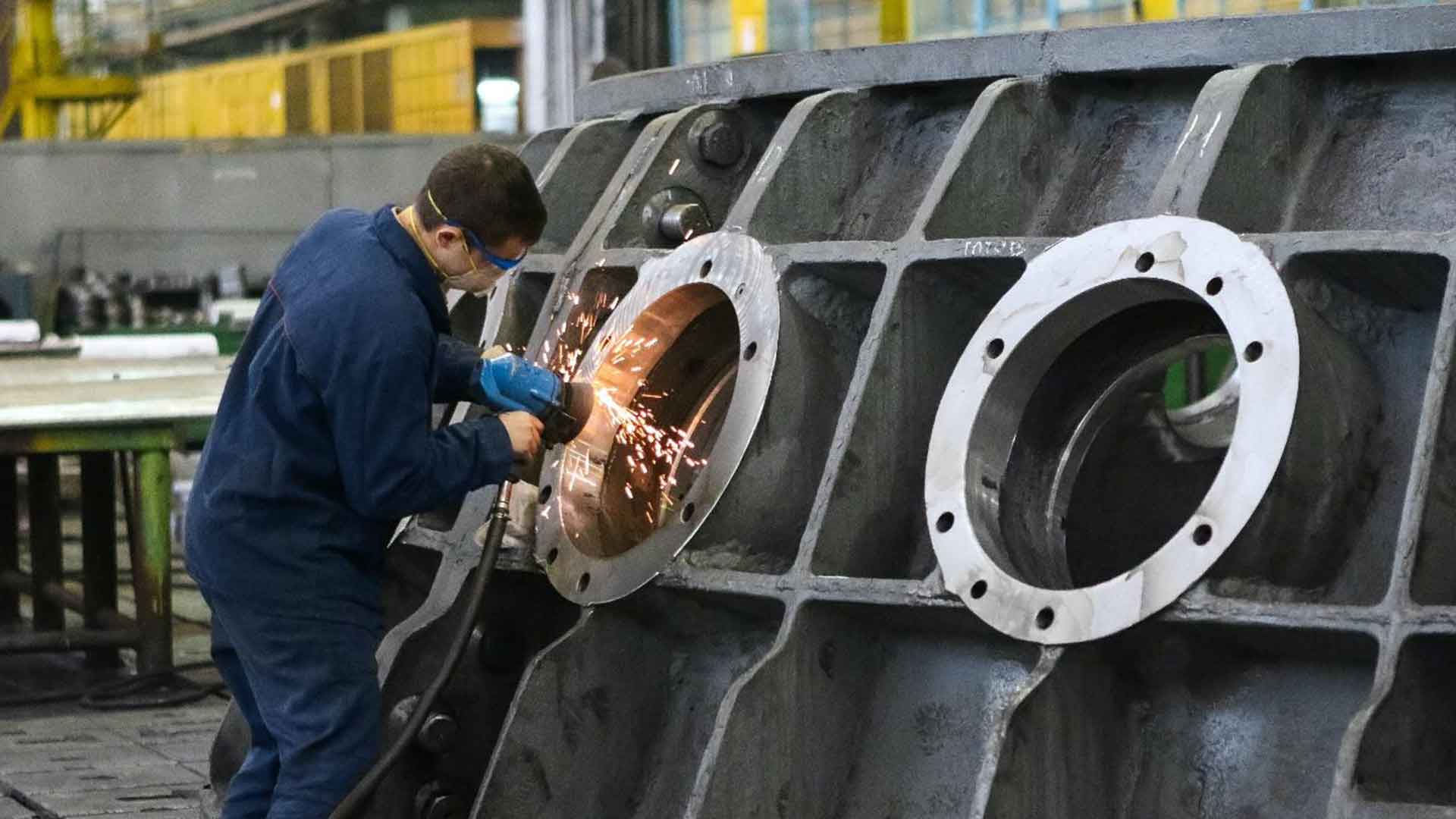Do you like welding? Whether you’re a hobbyist or someone who does it in your career, there are some techniques and tools that you should be aware of. One such is a tungsten grinder. Why is that?
Well, one of the most popular and common forms of arc welding is TIG, often called tungsten inert gas grinding. It’s used in many different industries, including the aerospace industry, the automobile industry, and even by many artists to create intricate and beautiful sculptures.

This is because, in practice, it gives you a slag-free product at the end and doesn’t require any fluxing. You avoid any oxygen contamination because of the inert gas that surrounds the welds. So, having the right tools to do this could certainly be beneficial for anyone in this field.
What is Tungsten?
Before we go any further, let’s discuss the basics here – what is tungsten, anyway? It’s number seventy-four on the periodic table and is sometimes called wolfram. It’s an element in the metal family. Humans discovered it back in the eighteenth century.
Interestingly, it usually doesn’t appear naturally in pure form, but rather combined with other elements. It’s a fairly rare substance. That being said, it’s desirable for welding because of its extremely high melting point. The only element that has a higher melting point is carbon (a lot of us don’t realize this because it’s usually in a gaseous form).
The alloys that use it are quite common – more than we realize. In fact, it is used in mundane items like the filaments for lightbulbs and in medical equipment such as x-ray machines. In welding, it is used as an electrode.
The final thing I’ll mention is that it is a slightly toxic material. That means that NIOSH, the National Institute for Occupational Safety and Health has a recommended limit for exposure time to it during an eight-hour workday. Keep this in mind, especially if you are working from a workshop at home.
Also Read: 5 Best Laser Engraving Machine For Metal
Why Use a Tungsten Grinder?

There are a few reasons why you might. The first is that they are relatively convenient given their portability. A model like this one, https://www.techsouthinc.com/tungsten-grinders, as one example, can be hand-held and taken wherever you need to go. This is one benefit that you may not get from other types.
Next, they do not need any coolants. This means you don’t have to be changing that often. This saves you a lot of time that you may not have realized you were losing!
Another thing is that they allow for more control when you do go to weld. A lot of the work requires precision, so being able to be exact with an arc is a nice perk. You can avoid any rough or sharp edges, for example.
It can also prevent any contaminants from getting on your electrode or electrode holder. These could end up compromising the quality of your weld, so it’s important to pay attention and ensure that isn’t happening. If it does, a portable grinder allows you to quickly adjust rather than needing to carry anything across the room!
Also Read: How To Optimize Supply Chain Issues?
Are there any Safety Protocols?
The answer to this is a resounding yes. There absolutely are safety measures that you should take before you decide to take on a project at home or at work. First, you should make sure you are dressed correctly.
This means that you should not have any loose clothing and you shouldn’t expose any skin to your electrode. If you plan to stay exposed to tungsten for a long time, it is recommended that you wear a ventilator. You can read more information about that on this website, which you should take to heart.
Goggles are critical as well because you should always shield your eyes. They are important to our daily lives, so we should take care of them accordingly. Getting metal or toxic gas in them would be dangerous.
Before you even get started, you need to examine your workspace. Check for any damaged items. This includes your equipment of course, but also check any electrical plugs, outlets, or wires. If they are sparking or not working correctly, you may not want to use them or proceed with your project before calling in someone to repair them.
Another way you can protect yourself is to understand any instructions and guidelines for machinery you are operating that are provided by the manufacturer.
You should only use them in the way that is intended. Experimenting or trying to take shortcuts might save you a minute or two, but it could also result in a disaster. It’s best to stick to the books, as tedious as that might seem.
There are a few risks that you should always be on the watch for when you decide to start welding. The first is electric shock. It can happen when you press two pieces of metal that both carry voltage together. If that voltage is high enough, it can even result in death.
Of course, being exposed to toxic gas or chemical is another worry. If you utilize proper personal protective equipment, you should generally be safe. Still, if any alarms go off, you should get out of there and inform a superior or even the fire department if it’s serious enough!
Thankfully, there are simple regulations you can follow to mitigate these risks. As I mentioned, PPE is one thing. However, another way is to have proper ventilation wherever you are working. You might install a fan, for example.
Also, ensure that everything you are working with is dry. Water can cause a situation that results in electrocution, so don’t let anything wet touch your electrode or the holder. Additionally, don’t clutter the place you weld.
Any unnecessary items around could be a fire hazard. If you’re wondering why it’s because any sparks that come from the machinery can travel quite far. If they happen to land on something flammable…well, it’s a recipe for disaster. So, good luck with welding, and stay safe out there!